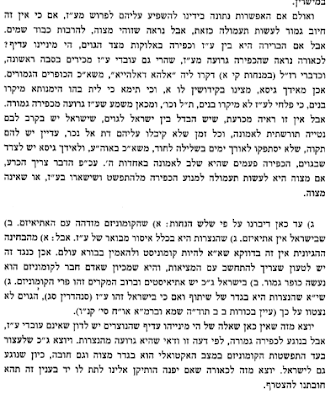Why does the Torah introduce the mitzvah of the parah adumah with the phrase זֹאת חֻקַּת הַתּוֹרָה, This is the law of the Torah, wouldn’t it have been more fitting to say זֹאת חֻקַּת הַפָּרָה, This is the law of the cow, as it does with other commandments like such as זֹאת חֻקַּת הַפֶּסַח, This is the law of the Pesach offering?
The Or HaChaim explains that the Torah isn’t merely presenting the law of the parah adumah—it is revealing a foundational principle for the entire Torah. What is that principle? The parah adumah is the quintessential chok—a command that defies human logic. By calling it “the law of the Torah,” the Torah is teaching us that this approach applies to all mitzvot: just as we fulfill a chok not because we understand it, but because it is the will of Hashem, so too every mitzvah—whether rational or beyond comprehension—must ultimately be fulfilled because Hashem commanded it. Our commitment is not rooted in intellect but in submission to Divine will.
The word חק shares its root with the word חקיקה, meaning “engraving.” Written text lies atop the parchment, it is separate and is removable. However, engraved text is carved into the stone and becomes one with the surface itself. So too, when we fulfill a mitzvah only because it makes sense to us, it remains external, superimposed on our identity. But when we perform Hashem’s will because it is His will, the mitzvah becomes engraved into our soul. The mitzvah performed shapes the identity of the person (see Likutay Sichos volume 8.)
When there is a lack of water Moshe is instructed to speak to the rock. But earlier, in parshat Beshalach, when the people complained they were thirsty Moshe is instructed to hit the rock, what is the difference between these two episodes? The answer lies in viewing the rock not merely as a source of water, but as a metaphor for accessing the inner being of the people. To draw water from the rock is to access the waters of spiritual vibrancy.
In Beshalach, Bnei Yisrael had not yet stood at Har Sinai. They had not yet entered into the covenant of Torah, the eternal bond engraved (chakikah) into their essence. They still required an external impact, a bang, to break open the spiritual barriers that concealed their dormant holiness. Hence, Moshe was told to strike the rock. But in Chukas, Klal Yisrael had experienced Matan Torah, they already obtained "חיי עולם נטע בתוכנו", “eternal life was planted within us.” The Torah was no longer external to them; it was engraved into their souls. The appropriate approach, then, was no longer force, but gentle speech to bring out the deep inner connection that already existed.
The meforshim have a struggle to pinpoint exactly what Moshe Rabbenu did wrong at the מי מריבה, but no matter how we explain the sin, why is it deemed so bad that Moshe Rabbenu's opportunity to enter Eretz Yisrael is revoked? Many of the Chassidic seforim explain each in their own way that the sin was not so bad in its own right to be the סיבה, the cause, for Moshe Rabbenu to lose out but rather was a סימן, a sign that Moshe was no longer fit to be the leader. Moshe Rabbenu led a people who required miracles and awe, a generation whose spiritual growth was catalyzed through external force, he had to lead with the stick. so to speak. But now, a new generation had matured. Their connection to Hashem was deeply rooted; they no longer needed to be struck to awaken. They needed to be spoken to, to merely shake off the dust to reveal that connection. Moshe’s leadership style, perfect for the generation that left Egypt wilderness, was no longer fit for the current generation. Sometimes while a leader may be a great person, he is no longer able to connect to the next generation, his methods and messaging is old and outdated and there is need for younger leadership, those who speak to the ears of the current generation, to step up.
This shift is reflected in the contrasting shirot of Bnei Yisrael. At Yam Suf, it is Moshe who leads, אש ישיר משה and the people follow his lead in song and spirit. They required someone to draw the praise from them. However, in the song of the Be’ar Miriam, the well of Miriam, Moshe’s name is absent as the Sfas Emes notes. Why? Because now the people sang on their own. It is the same as the difference between a pit and a well. A pit is reliant on external rain, while a well draws water from deep within. The song of the be'ar was not just for the be'ar of Miriam, it was about their internal well. Klal Yisrael had become a well, they had their own deep spiritual connection to Hashem and could feel the spiritual uplifting expressed in a shira. They no longer needed Moshe to place the words in their mouths. The song sprung forth from within themselves. The recognition of Hashem was engraved in their hearts.
